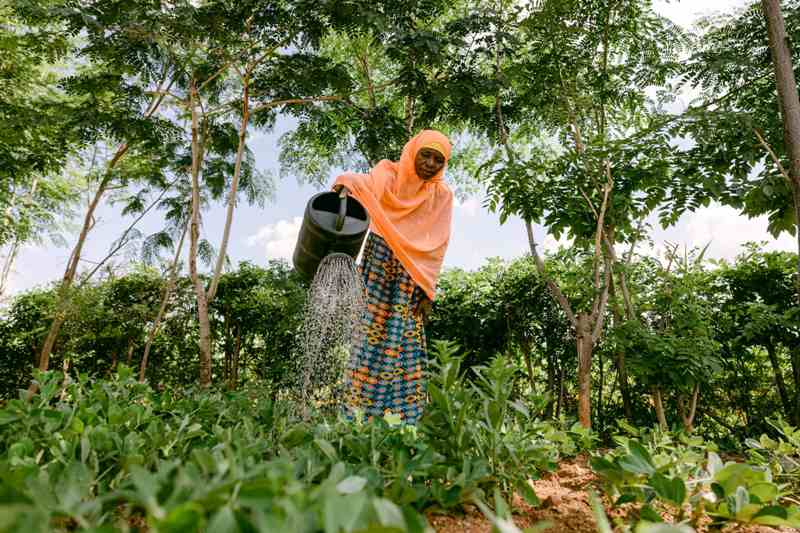Trees for the Future Releases Latest Data on Hunger, Poverty, and Landscape Restoration
In a report released Thursday, Trees for the Future (TREES) shares the short and long-term effects of agroforestry systems on hunger, poverty, and landscape restoration. The report confirms that TREES’ Forest Garden Approach effectively achieves the triple bottom line of food security, economic resilience, and environmental impact.
“Farming and agricultural land use are key factors in the climate crisis and are closely tied to food and income insecurity,” says TREES Director of Monitoring, Evaluation, and Learning Andrew Zacharias. “So, it should come as no surprise that farming systems that put the farmer’s land and personal wellbeing first can effectively address those three global challenges.”
Local TREES staff are working directly with farmers across sub-Saharan Africa – in Senegal, the Gambia, Mali, Cameroon, Chad, Central African Republic, Uganda, Kenya, and Tanzania. Over the four-year training program, farmers learn to establish Forest Gardens on half an acre of their own land. They plant 2,500+ agroforestry, fruit, and nut trees and grow dozens of species of food and resource crops. As they protect and restore their land and biodiversity, they’re able to grow more to eat and sell.
“I come to my Forest Garden early and leave late, because when life gives you a second change, you seize it,” says Jeanne D’Arc, a Forest Garden farmer in Senegal.
Key takeaways from the report:
- 53 million trees planted between July 2021 and July 2022.
- 278 million trees planted since 1989.
- 10,121 Forest Gardens established between July 2021 and July 2022.
- 4.4 million metric tons of CO2 sequestered over a 20-year period.
- Farming families exceeded the global target for food security in two years.
- Farming families met the goal for household dietary diversity in three years.
- Farmers doubled their income through fruit and vegetable sales.
- 98% of farmers said they were confident they’d be able to cope financially in the future by year three.
The Monitoring, Evaluation, and Learning team collected an average of 140 reports a day over the last year, regularly building on the 33 years of data collection for the organization. Explore their findings in the full report.
